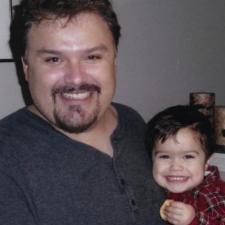
Chris M. answered • 12/04/19
Scientist and Maker with Experience in K-12 Education
What you're looking at is a chromatogram of your DNA sequence as a result of Sanger Sequencing. Sanger uses florescently-tagged nucleotides in order to read a sequence. The bottom of the plot shows you the florescence intensity for each nucleotide as measured by your sequencing machine. This data is fed into a "base-caller" algorithm that determines which base should be at each position.Here you should see tall, well-defined peaks for each type of nucleotide (A,T,G,C). If you had weak peaks or two competing peaks of similar intensities your base-calling software would have given you an N, indicating that there was not enough information to make a confident base call. The chromatogram is typically just used for initial quality control and base calling and once you've run it through your quality control software of choice, you really won't use it again for downstream data processing.
Towards the top, you will see numbers indicating the nucleotide position in the given sequence and above that the nucleotide that was called at each position. This string of bases is what will be used for downstream data processing. Finally, on top of the bases are a series of bars representing a Phred Quality Score. This score is a value that shows how much confidence your base-caller has that the indicated nucleotide was not called by random chance. The Phred Score is given as
Q = -10 log10P
where P is the probability of a base being called by random chance. If you solve for P and plug in your quality score you can determine your confidence in base calls. Typically, we say a phred score of at least 25 is acceptable, that is to say that our base call accuracy is 99.9%.
Hopefully that answers your question. Let me know if you need any more clarification.




